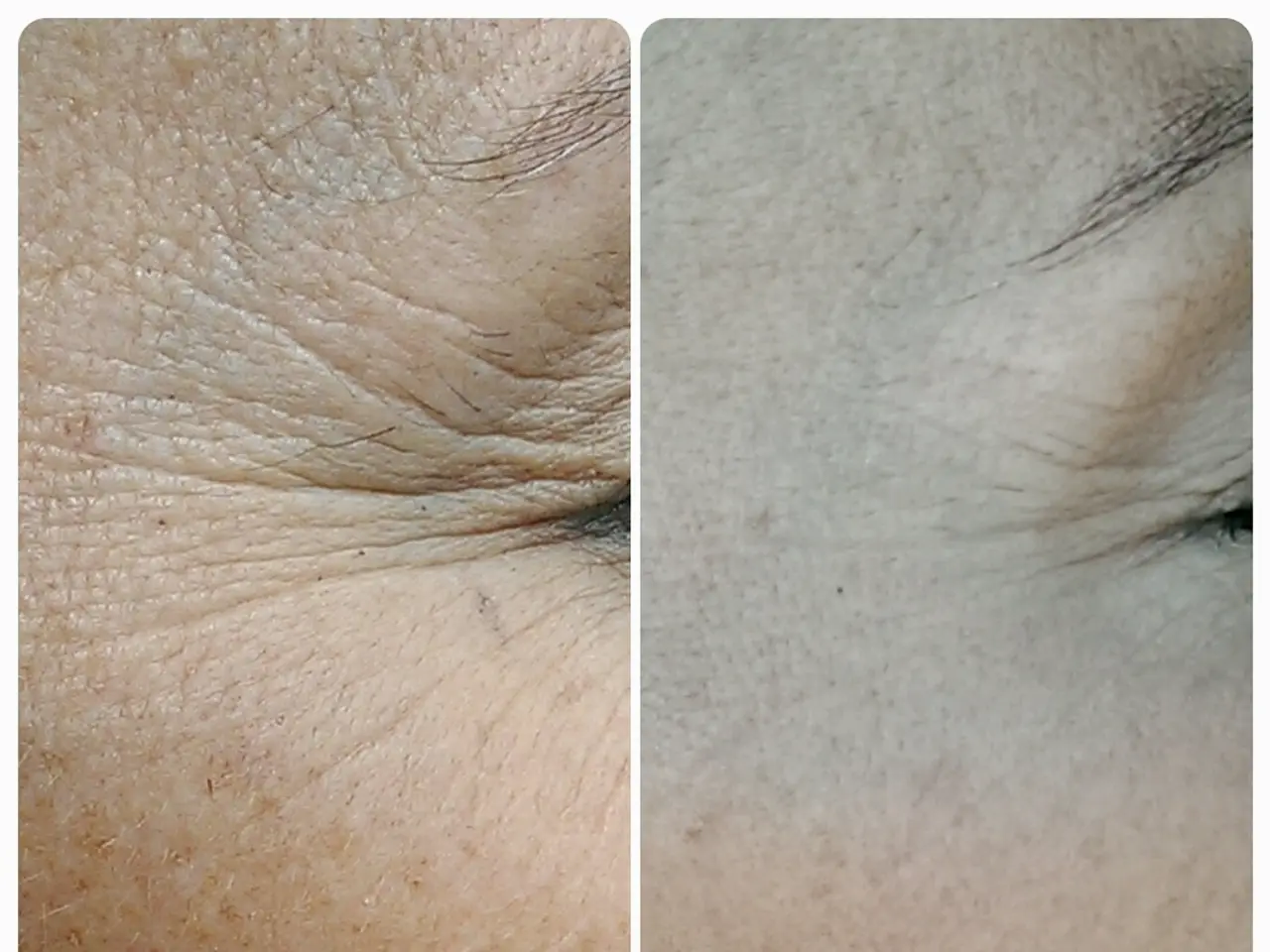Potential Risks of Long-Term Thumb-Sucking and Pacifier Habit
Thumb-sucking or pacifier use can have significant impacts on a child's oral health, potentially leading to issues such as open bite, increased overjet, chewing problems, cross bite, and tongue thrust compensation. These problems may require surgery, cause speech impediments, issues with facial development, gum problems, and too much pressure on the teeth and jaw [1].
To prevent these issues, a combination of strategies is recommended. Parents can limit and gradually reduce the habit, hiding pacifiers or toys to discourage the behavior or restricting it to specific times, such as bedtime only [1]. Gentle encouragement and education are also key, explaining to the child that they are "too old" for thumb-sucking and involving them in the decision to stop [1].
Positive reinforcement and emotionally intelligent coaching can be effective, using praise, small rewards, or incentive charts to encourage cessation. Some practitioners use imaginative approaches, like creating a "Smile Hero" character to make stopping fun and engaging [1][2][3]. Substitute activities, like providing children with a soft toy or stress ball, can help during triggers like car rides or watching TV [5].
Physical reminders or deterrents, such as applying a non-toxic bitter-tasting substance or bandaging the thumb, can deter thumb-sucking without shaming the child [1][4]. For persistent cases beyond age 4-6 with dental issues, a dentist may recommend an intraoral crib device to block thumb placement [2].
The American Academy of Pediatric Dentistry advises that children should discontinue thumb-sucking, finger-sucking, or pacifier use before the age of 3 to avoid oral health problems [6]. Thumb-sucking, finger-sucking, or pacifier use can be influenced by various factors, including boredom, hunger, stress, hyperactivity, pleasure, sadness, and various disabilities [7].
It's important to note that while it is normal for small children to use pacifiers or their thumb to calm down or stop crying, prolonged use can lead to oral health problems [8]. Offering encouragement and helping children find other solutions to manage boredom or anxiety is a more effective approach to stopping thumb-sucking or pacifier use [9].
Orthodontic pacifiers, which are flat-bottomed and square, are less likely to contribute to bite issues after teething compared to conventional pacifiers [10]. Most hospitals send home conventional green rubber pacifiers with newborn babies [11].
In summary, a combination of patience, positive reinforcement, substitution, gentle deterrence, and in some cases professional guidance is most effective in stopping thumb-sucking and avoiding related oral health problems [1][2][3][4][5]. For more advice on maintaining healthy teeth, understanding the role of the Tooth Fairy, and learning how to get a toddler to brush their teeth, further resources are available.
References:
[1] American Dental Association. (2021). Thumb Sucking. Retrieved from https://www.ada.org/en/member-center/oral-health-topics/thumb-sucking
[2] American Academy of Pediatrics. (2021). Thumb Sucking. Retrieved from https://www.healthychildren.org/English/health-issues/conditions/Oral/Pages/Thumb-Sucking.aspx
[3] Mayo Clinic. (2021). Thumb Sucking. Retrieved from https://www.mayoclinic.org/healthy-lifestyle/childrens-health/in-depth/thumb-sucking/art-20047177
[4] British Dental Association. (2021). Thumb Sucking. Retrieved from https://www.bda.org/advice-and-support/for-the-public/oral-health/thumb-sucking
[5] Healthline. (2021). How to Stop Thumb Sucking in Children. Retrieved from https://www.healthline.com/health/how-to-stop-thumb-sucking-in-children
[6] American Academy of Pediatric Dentistry. (2021). Thumb Sucking and Pacifier Use. Retrieved from https://www.aapd.org/resources/parent-resources/oral-health-topics/thumb-sucking-and-pacifier-use/
[7] Children's Hospital of Philadelphia. (2021). Thumb Sucking and Pacifier Use. Retrieved from https://www.chop.edu/conditions-diseases/thumb-sucking-pacifier-use
[8] National Health Service. (2021). Thumb Sucking. Retrieved from https://www.nhs.uk/live-well/healthy-body/thumb-sucking/
[9] WebMD. (2021). Thumb Sucking. Retrieved from https://www.webmd.com/parenting/ss/slideshow-thumb-sucking
[10] OrthoInfo. (2021). Orthodontic Pacifiers. Retrieved from https://www.orthoinfo.org/topics/orthodontic-pacifiers
[11] La Leche League International. (2021). Pacifiers and Thumb Sucking. Retrieved from https://www.llli.org/breastfeeding-info/pacifiers-and-thumb-sucking/
Note: This article is intended for informational purposes only and does not replace professional medical advice. Always consult with a healthcare provider for personalized advice and guidance.
- Besides dental issues, thumbsucking and pacifier use can also impact a child's speech and facial development, as well as cause speech impediments and issues with facial development [8].
- A toddler's health-and-wellness can be affected by thumb-sucking and pacifier use, leading to potential problems like open bite, increased overjet, chewing problems, and cross bite, as well as gum problems and too much pressure on the teeth and jaw [1].
- Encouraging children to engage in fitness-and-exercise and proper nutrition can help reduce thumb-sucking, as they may find other ways to manage boredom or anxiety [9].
- Children's oral health during development is crucial, and thumb-sucking, finger-sucking, or pacifier use should discontinue before the age of 3 to avoid oral health problems, according to the American Academy of Pediatric Dentistry [6].
- Science has developed orthodontic pacifiers, such as flat-bottomed and square ones, which are less likely to contribute to bite issues during teething compared to conventional pacifiers [10].




